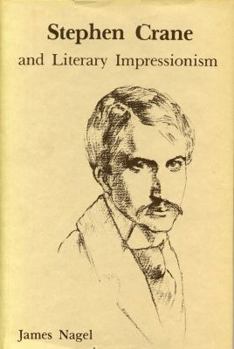Stephen Crane and Literary Impressionism
Stephen Crane's distinctive style since his earliest publication has been a preoccupation of critics, but they have disagreed in their interpretations, variously describing him as a Naturalist, Realist, Imagist, Symbolist, and Impressionist. In this book James Nagel convincingly argues that, although Crane was all of these, it is the norms and methods of Impressionism that constitute "the continuing and informing impulse throughout his work." Such a perspective on Crane affords a new understanding of all facets of his oeuvre. Early in his life Crane lived with painters who had studied Impressionism in Paris, and his writings from that period and later manifest his interest in the subject. But, more importantly, his fiction uses themes and devices that parallel the ideas and craft of Impressionistic painting. Dr. Nagel explores the extent of this influence on Crane's narrative methods, themes, structures, characterizations, and patterns of imagery, using many examples from the Crane canon, Crane's relationship with his literary contemporaries--Harold Frederic, H.G. Wells, Ford Madox Ford, Joseph Conrad--is also examined.
Format:Library Binding
Language:English
ISBN:0271002670
ISBN13:9780271002675
Release Date:October 1990
Publisher:Penn State University Press
Length:200 Pages
Customer Reviews
0 rating





